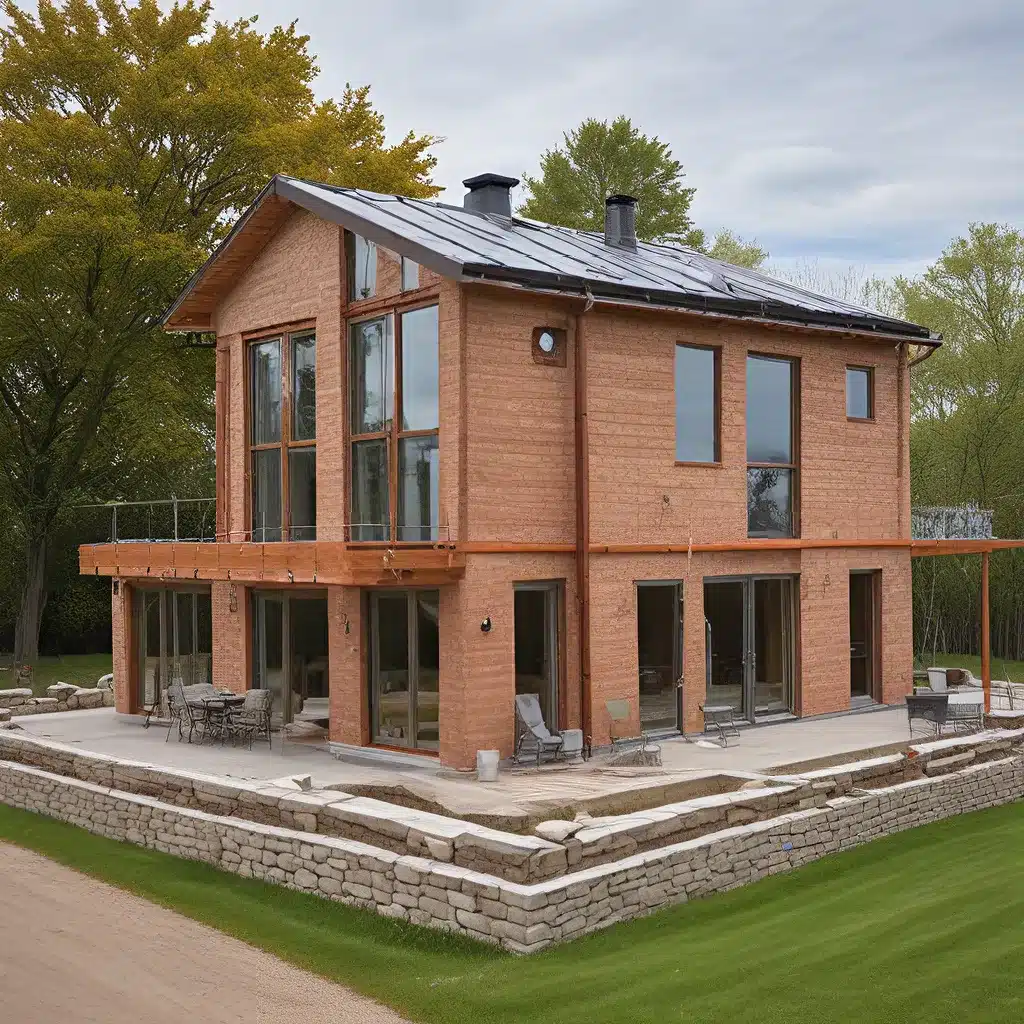
As an eco-conscious homeowner, I’ve been on a mission to optimize the energy efficiency and sustainability of my living space. One design concept that has recently piqued my interest is the idea of harnessing the power of thermal mass. But what exactly is thermal mass, and how can it transform my home into a paragon of green living? Let’s dive in and explore this fascinating topic together.
The Science Behind Thermal Mass
At its core, thermal mass refers to the ability of certain materials to absorb, store, and release heat. These materials, like concrete, stone, and brick, have a high specific heat capacity, meaning they can hold onto heat energy for an extended period before releasing it. This property is what makes them so valuable in passive solar design.
Imagine your home as a giant battery, with these thermal mass materials acting as the cells that store and discharge energy. During the day, as the sun shines through your strategically placed windows, the thermal mass absorbs the heat. As the temperatures drop at night, the stored heat is gradually released, helping to maintain a stable indoor climate.
The Benefits of Thermal Mass
The advantages of incorporating thermal mass into your home design are numerous and far-reaching. Let’s explore a few of the key benefits:
1. Energy Efficiency
By minimizing the need for active heating and cooling systems, thermal mass can significantly reduce your energy consumption and, in turn, your utility bills. This is particularly evident in homes that leverage passive solar design principles, where the strategic positioning of windows and the use of thermal mass materials work in harmony to regulate indoor temperatures.
2. Comfort and Stability
With thermal mass, you can say goodbye to those pesky temperature fluctuations that can make a home feel drafty and uncomfortable. The gradual release of stored heat helps maintain a consistent, comfortable temperature throughout your living spaces, leading to improved productivity, better sleep, and overall enhanced well-being.
3. Sustainability and Environmental Impact
Reducing your reliance on fossil fuel-powered heating and cooling systems not only saves you money but also contributes to a more sustainable future. By incorporating thermal mass into your home, you’re effectively minimizing your carbon footprint and doing your part to combat climate change. It’s a win-win for both your wallet and the planet.
Choosing the Right Thermal Mass Materials
Not all thermal mass materials are created equal, and the specific needs of your home will dictate the best choices. Let’s take a closer look at some popular options:
Concrete
Concrete is a versatile and commonly used thermal mass material. Its high density and thermal capacity make it an excellent choice for foundations, floors, and even walls. Strategically placed concrete elements can help regulate indoor temperatures and reduce energy consumption.
Stone
Natural stone, such as granite or limestone, is another popular thermal mass material. With its impressive heat storage capacity and durability, stone can be integrated into various home design elements, from countertops to fireplaces.
Brick
Brick is a classic thermal mass material that has been used in construction for centuries. Its thermal properties, combined with its aesthetic appeal, make it a popular choice for both interior and exterior walls, helping to maintain a comfortable indoor climate.
When selecting the right thermal mass materials for your home, it’s essential to consider factors like climate, building orientation, and overall design goals. Working with a knowledgeable architect or builder can help you make informed decisions and ensure that your thermal mass integration is optimized for maximum efficiency.
Combining Thermal Mass with Solar Power
As I’ve been exploring the world of sustainable home design, I’ve discovered that the benefits of thermal mass can be further amplified when combined with active solar design, such as the installation of solar panels.
Solar panels are the perfect complement to a home with thermal mass. While the thermal mass materials regulate the indoor temperature by absorbing and releasing heat, the solar panels actively harness the sun’s energy to power your home’s electricity needs. This harmonious integration of passive and active solar design creates a truly sustainable living environment.
The synergy between thermal mass and solar power is impressive. The thermal mass helps stabilize indoor temperatures, reducing the strain on your solar-powered HVAC system and maximizing the efficiency of your solar panels. In turn, the renewable energy generated by the solar panels can power any remaining heating or cooling requirements, creating a self-sustaining cycle of eco-friendly energy usage.
Ongoing Research and Future Possibilities
As I’ve delved deeper into the realm of thermal mass and sustainable home design, I’ve discovered that there’s still a wealth of ongoing research and innovation in this field. Scientists and engineers are continuously exploring new materials, techniques, and technologies to further enhance the capabilities of thermal mass.
For instance, some studies have suggested the potential of phase-change materials (PCMs) to revolutionize thermal mass. These materials can store and release heat at specific temperature thresholds, offering even greater control and flexibility in temperature regulation.
Additionally, the integration of smart home technologies with thermal mass systems is an area of active exploration. Imagine a home that can automatically adjust its thermal mass storage and release based on real-time weather data and occupancy patterns, optimizing energy efficiency and comfort effortlessly.
It’s an exciting time to be an eco-conscious homeowner, as the possibilities for sustainable living continue to evolve. By staying informed and embracing the power of thermal mass, we can create homes that not only reduce our environmental impact but also provide us with unparalleled comfort and cost savings. The future of sustainable housing is bright, and thermal mass is undoubtedly a shining star in this exciting journey.

